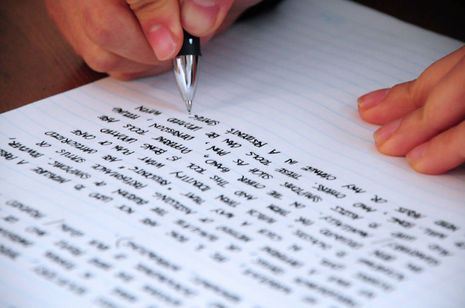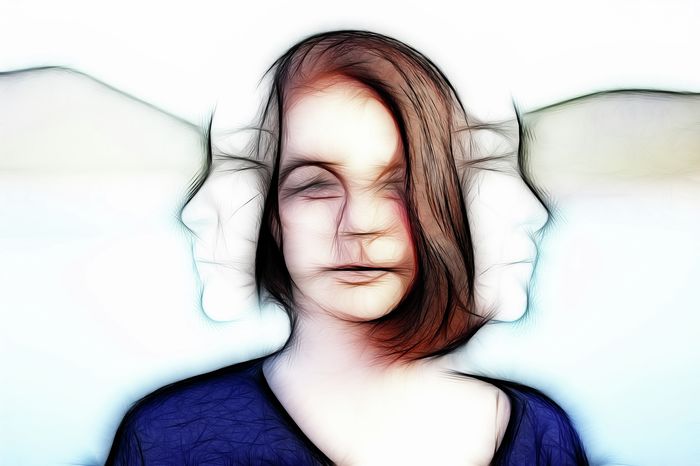Diary of a Playwright: A Shakespearean Tragedy
Tom Chandler continues their column on playwriting by discussing planning, and coping in the face of unexpected events

A tragedy of Shakespearean proportions has befallen this writer. What I was intending to write about this week, planning a play, has had a spanner thoroughly thrown in its works. I was thrown rather rudely from my bike, and thus have broken my elbow, hindering any typing ability that I once had. So, what shall we take from this tragedy, this hurdle on the track to completing a play?
You may ask, “How are you writing this?” Well, thanks to the unstoppable advance of technology, I am now able to use a dictation software to write. This highly unorthodox and admittedly bizarre method of writing is actually rather suited to writing a play. An issue I have come up against time and time again in writing is trying to write in a way that sounds natural for an actor speaking; however, using the dictation software completely erases this concern, as I am actually speaking myself. Now of course, writing an essay in this style is considerably harder than typing; having to say out loud every piece of punctuation in order to put it in takes considerably more mental effort than typing a full-stop or a comma, but, due to the fact they have no choice right now, I have been embracing this new challenge. Much of theatre is about overcoming obstacles, such as a small cast, a tight budget, lack of skills in a particular area or more recently Covid restrictions, but the magic of theatre is in its resilience in finding solutions to these.
“Much of theatre is about overcoming obstacles”
Finding a workaround for my out-of-action hand has been surprisingly illuminating. I have developed a natural rhythm to the words, even to punctuation, that simply isn’t there when I am just tapping my fingers away at a keyboard. It’s also much easier for any stream-of-consciousness writing; there is a different thought process behind speaking than there is behind writing something down, and I think this really shows when I read back the dictated dialogue compared to the written.
Thankfully, before my accident I was able to complete some of the planning that I had planned to do this week. I began by checking over my character list, which includes all the basic biographical information about the historical figures in this play, and putting the characters onto a family tree of sorts to map the relations between them. In the play, political affiliations are incredibly important, so I designed a colour key which would mean I could easily identify the political affiliation of each character within these trees. Only one of these trees was actually a family; instead, most of them were based on hierarchies within the political organisations that I was concerned with. As my play spans multiple generations, I was also able to track the rough age of all my characters – this has been really helpful in grouping people together into rough age categories, and imagining friendships/relationships beyond what the historical sources explicitly state. Two prominent figures involved in an event must have some emotional reaction towards each other, even if the history books don’t state it, and for a play these connections are what you must invent and explore.
“Overall, the planning stage is about helping me to write the play itself as easily as possible”
The next step in planning was concerned with the bare-bones plot. I don’t have anything revolutionary on this, I simply draw a timeline and notice the most important points on the timeline of the play – those which had to be included and would form the most important highs and lows of the main plotline, the subplot being planned later and interwoven. Next, I embark on what may be considered the more personal part of this process, mood-boards! For each of these major plot points, I create a mood-board which sums up the vibe of the scene and the set. This serves a dual purpose: 1. It helps me when writing to properly picture the emotion and the setup of the scene. 2. It helps me/any potential director to block the scene or design set for the play. Within these mood-boards, I include both pictures of potential set, as well as art which I find speaks to the emotions and the aesthetics of the scene. Overall, the planning stage is about helping me to write the play itself as easily as possible, so while writing I can focus on dialogue and characterisation rather than plot and logistics.
So, going into the final few weeks of term, I begin to think about the direction my writing will take this summer, and honestly, I’m super excited – though I will be much happier when I can type without pain again! During this exam season, I have certainly found my writing a helpful rest from the stress of essays and vocabulary learning, and in my next column I hope to reflect more on the personal connection I have to my writing. For now, I will take my time curating some beautiful mood-boards!
 News / Eight Cambridge researchers awarded €17m in ERC research grants27 December 2025
News / Eight Cambridge researchers awarded €17m in ERC research grants27 December 2025 News / Clare Hall spent over £500k opposing busway 24 December 2025
News / Clare Hall spent over £500k opposing busway 24 December 2025 Comment / League tables do more harm than good26 December 2025
Comment / League tables do more harm than good26 December 2025 News / Caius mourns its tree-mendous loss23 December 2025
News / Caius mourns its tree-mendous loss23 December 2025 Comment / The ‘class’ of Cambridge24 December 2025
Comment / The ‘class’ of Cambridge24 December 2025










